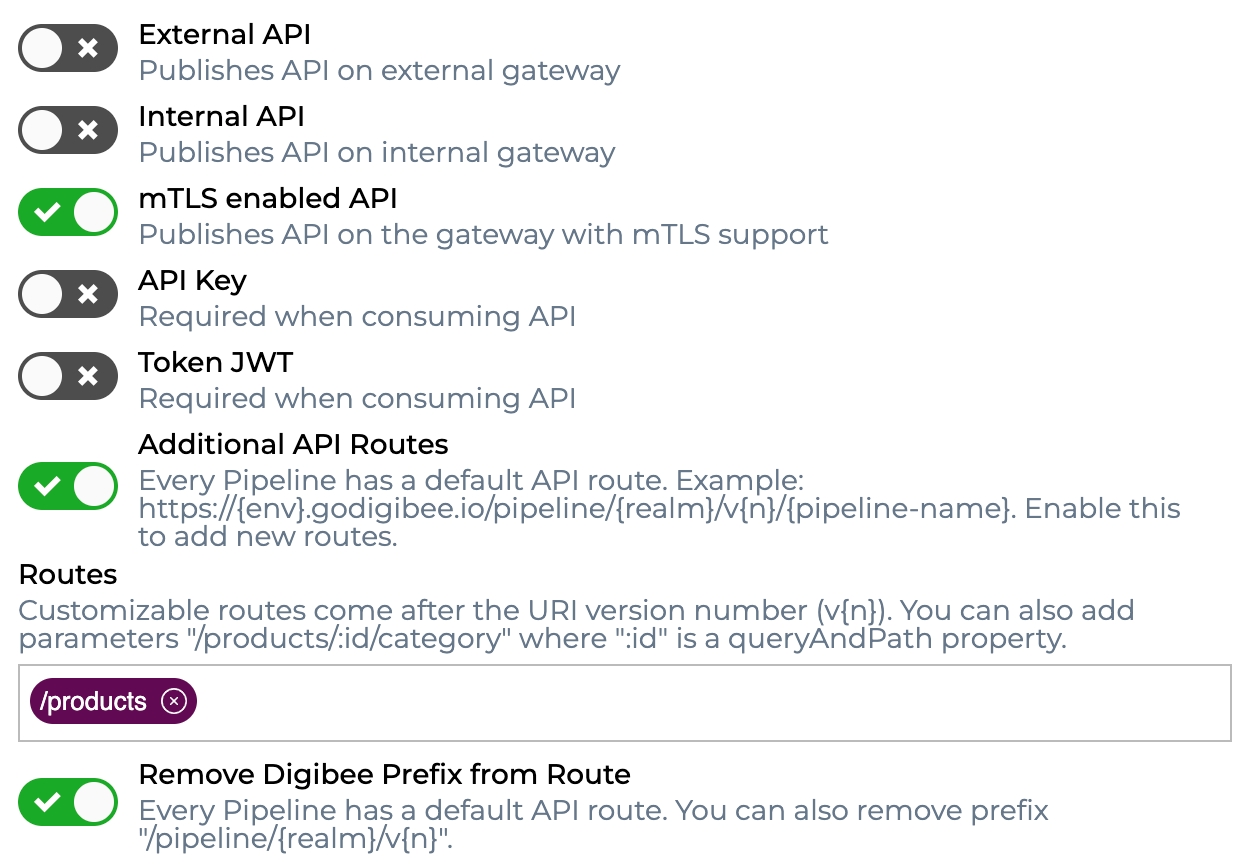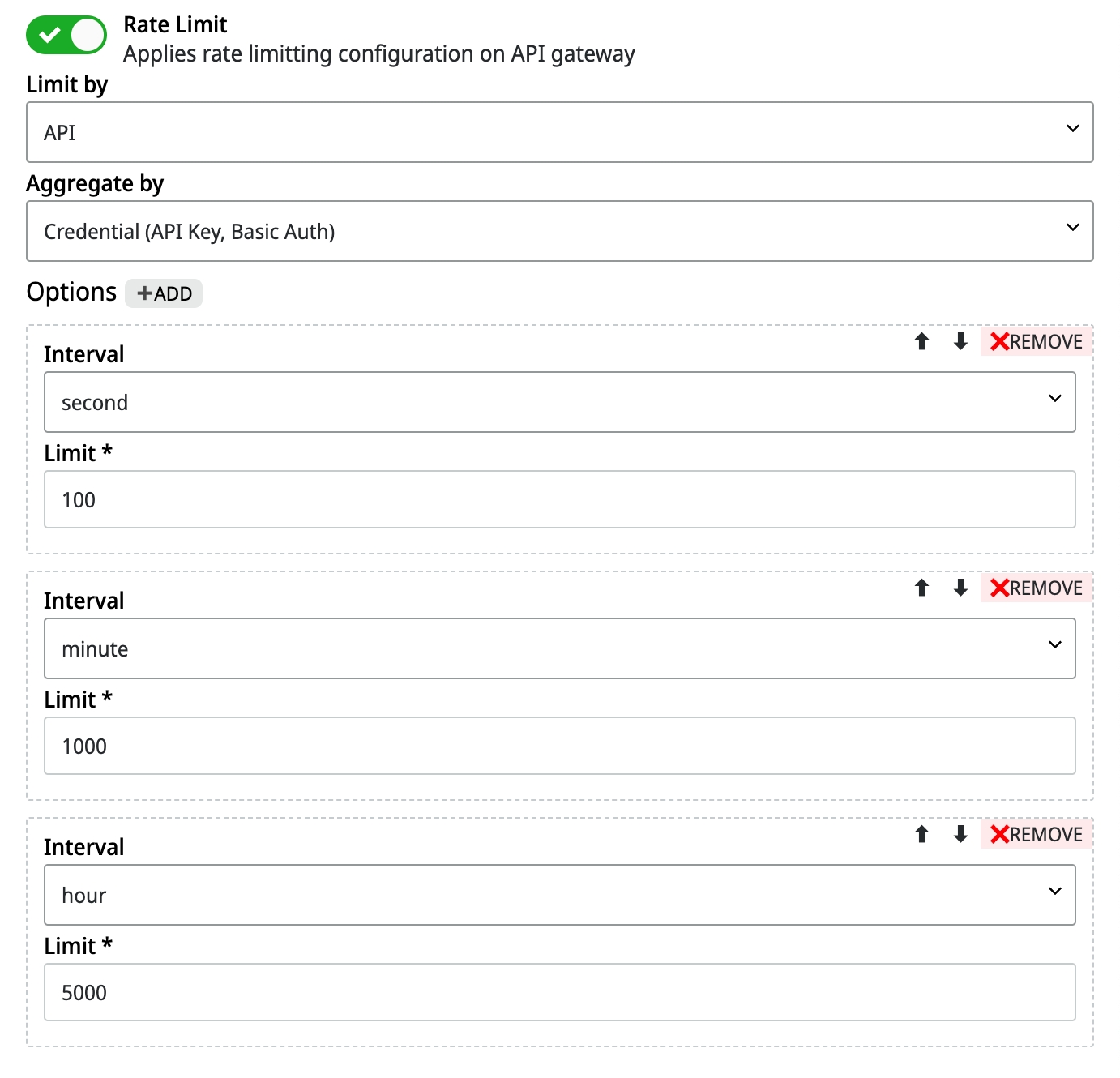HTTP File Trigger - Downloads
Discover more about the HTTP File Trigger and how to use it on the Digibee Integration Platform.
HTTP File Trigger downloads large files in a robust and efficient way, calling the GET method.
Parameters
Take a look at the configuration options for the component. Parameters supported by Double Braces expressions are marked with (DB).
Methods
Defines the methods accepted by the pipeline.
GET, PUT, POST, PATCH, and DELETE
String
Response Headers (DB)
Headers to be returned by the endpoint when processing in the pipeline is complete. This parameter cannot be left empty and accepts Double Braces. Special characters should not be used in keys, due to possible failures in proxies and gateways.
N/A
Key-value pairs
Add Cross-Origin Resource Sharing (CORS)
Adds the CORS headers to be returned by the endpoint when processing in the pipeline is complete. Cross-Origin Resource Sharing (CORS) is a mechanism that lets you tell the browser which origins are allowed to make requests.
False
Boolean
CORS Headers
Defines CORS specifically for the pipeline and its constraints. To configure globally rather than individually on each pipeline, see the CORS Global article.
N/A
Key-value pairs
Form Data Uploads
Enables/disables the receipt of the form data upload (multipart form data).
True
Boolean
Body Uploads
Enables/disables the receipt of bodies upload.
True
Boolean
Body Upload Content Types
Defines the content types allowed by the pipeline for the bodies upload.
application/pdf, application/jpeg
String
Response Content Types
Defines the response content types allowed by the pipeline - when configuring this response, you determine the response format.
text/xml, application/xml
String
Maximum Timeout
Maximum time (in milliseconds) that the pipeline takes to process information before returning a response. If the processing takes longer than the parameter definition, the request is finished and returns status code 500, but without a body. Default: 30000. Limit: 900000.
30000
Integer
Maximum Request Size
Defines the maximum size of the file in the upload request (in MB). Maximum: 100 MB.
50
Integer
External API
If activated, the option publishes the API in an external gateway.
True
Boolean
Internal API
If activated, the option publishes the API in an internal gateway.
False
Boolean
mTLS enabled API
If the option is activated, the API is published to a gateway dedicated to APIs with mTLS enabled by default. In this case, the access host will be different from the others. The pipeline can have both the External API and Internal API options enabled at the same time, but it is recommended to leave them inactive. This parameter does not support API Key and JWT. To use it in your realm, it is necessary to make a request via chat, and we will send you the necessary information to install this service.
False
Boolean
API Key
If activated, the option will request the key for the API consumption.
False
Boolean
Token JWT
If activated, the option will request the token for the API consumption.
False
Boolean
Basic Auth
If the option is activated, the endpoint can only be consumed if a Basic Auth setting is present in the request. This setting can be registered beforehand through the Consumers page in the Digibee Integration Platform.
False
Boolean
Additional API Routes
If activated, the option allows you to add new routes.
False
Boolean
Remove Digibee Prefix from Route
This option is available only when External API and Internal API parameters are disabled, and mTLS enabled API and Additional API Routes parameters are enabled. Set this option to remove the default Digibee route prefix "/pipeline/{realm}/v{n}" from the pipeline route. Learn more about the Remove Digibee Prefix from Route parameter in the section below.
False
Boolean
API Routes
Custom routes.
N/A
String
Rate Limit
If the option is activated, a rate limiting configuration will be applied on the API gateway. This option is only available if API Key or Basic Auth is active. See more about the Rate Limit parameter in the section below.
False
Boolean
Limit by
Defines the entity to which the limits will be applied. Options: API.
API
String
Aggregate by
Defines the entity for aggregating the limits. Options: Consumer and Credential (API Key, Basic Auth).
Consumer
String
Options
Defines the limit of requests that can be made within a time interval.
N/A
Options of Rate Limit
Interval
Defines the time interval for the limit of requests. Options: second, minute, hour, day, and month.
second
String
Limit
Defines the maximum number of requests that users can make in the specified time interval.
N/A
Integer
Allow Redelivery Of Messages
If activated, the option allows messages to be redelivered in case of Pipeline Engine failure.
N/A
Boolean
Parameters additional information
Add Cross-Origin Resource Sharing (CORS) - CORS Headers
We use a comma to enter multiple values in a header, but we don't add a space before or after the comma. Special characters should not be used in keys, due to possible failures in proxies and gateways.
Remove Digibee Prefix from Route
As previously explained, this option is recommended for removing the default Digibee route prefix from the pipeline route.
Let’s say you’ve created a pipeline and set the trigger as follows:

With the configurations applied and the pipeline deployed, you will get a new URL:
https://test.godigibee.io/products
Rate Limit
When creating APIs, we usually want to limit the number of API requests users can make in a given time interval.
This action can be performed by activating the Rate Limit option and applying the following settings:

HTTP File Trigger in action
Scenario: GET with any content type
Let's say you have a file with more than 5MB. You can call a pipeline endpoint configured with HTTP Trigger via GET with any content type for the request to be received and treated. The file is returned according to the output content type and its "as-is" content.
For that to happen, all you have to do is follow these steps:
Create a pipeline and configure its trigger as HTTP-File, including the GET method and the accepted Response Content Types.
Insert a File Connector in the pipeline to search the file to be enabled. You can, for example, configure WGet to obtain a file of a URL sent to the endpoint during a call.
Insert JSON Generator as the last step of your pipeline so that a JSON is generated in the following format:
{
"file": "file-download.pdf",
"Content-Type": "application/pdf"
}4. Deploy the pipeline.
5. Create a consumer and configure it so that it has access to the pipeline.
6. Call the pipeline through this curl:
curl https://godigibee.io/pipeline/realm_name/v1/pipeline_name -v -H 'Content-Type: application/pdf' -H 'apikey: generated_token' -H 'urlDownload: http://url/path'realm_name: refers to the realm where the pipeline is located.
generated_token: refers to the API Key generated by the recently created consumer.
urlDownload: parameter sent for WGet Connector to solve the value of the URL field. The attribute isn't mandatory but allows a more flexible approach through Double Braces. It works perfectly if you define the "path" directly in WGet Connector.
HTTP File Trigger Response
It's simple to define the pipeline response format. Add a Transformer to the end of the pipeline and define the response:
{
"file": "file-download.pdf",
"code": 200,
"Content-Type": "application/pdf"
}HTTP File Trigger responds to bodies that aren't files in the same way HTTP Trigger does. It allows the pipeline to respond with the file or with any other content type according to the invocation context. For HTTP File Trigger to respond with any body, the last step of the pipeline must have this structure:
{
"body": "information that will be written in the endpoint output",
"Content-Type": "body content type",
"code": <a HTTP return code>
}Last updated
Was this helpful?